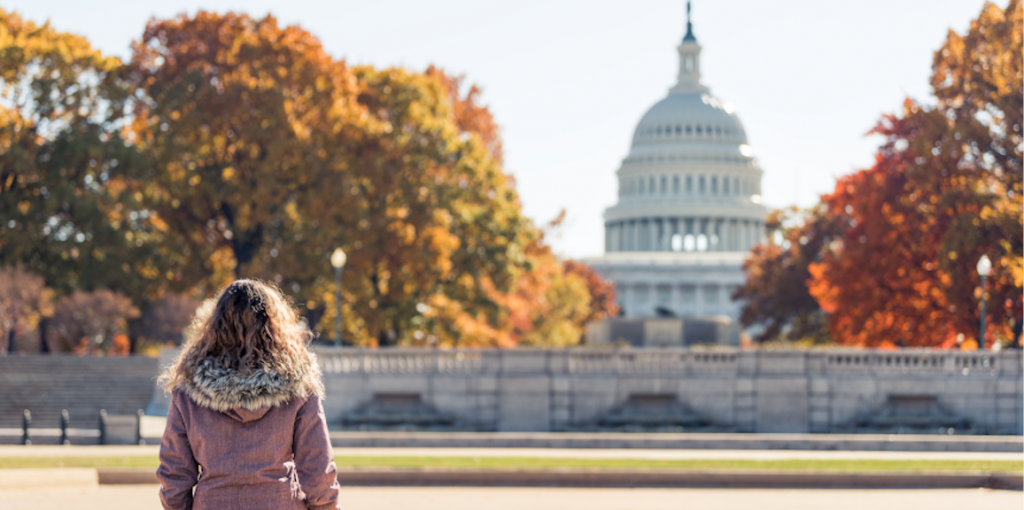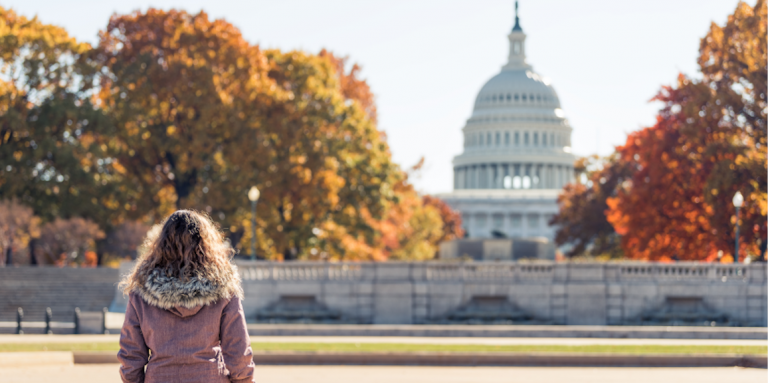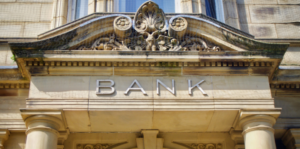The 2020 presidential election could have a significant impact on how student loans are handled in the US.
Proposals include fixing the Public Service Loan Forgiveness program (or canceling it completely), simplifying the income-driven repayment process, making community colleges free, and even canceling all federal student loan debt with no eligibility requirements.
If the student loan debt crisis is an important issue for you and you’re wondering if student loans will be canceled, here’s everything you need to know about what popular 2020 presidential election candidates are saying.
Will student loans be canceled? Popular 2020 election promises
As we near the 2020 election, student loans have become a bigger issue than they ever have been.
And with the average student loan balance reaching close to $30,000 — along with national debt encroaching 1.6 trillion — it’s no wonder.
Joe Biden
The former vice president’s proposal, called —The Biden Plan for Education Beyond High School,” includes a long list of plans to tackle student loan debt for college students. That includes:
- Two years of community college or other high-quality training programs for free.
- A grant program to improve community colleges.
- Allow Pell grants, state aid, and other aid to be used for any allowable expense instead of being applied to tuition and fees first.
- Double the maximum value of Pell grants.
- A federal grant program to help community colleges create emergency grants for students who experience financial hardship.
- A grant program for states to provide more programs to allow students to earn college credits in high school.
- Reduce income-driven repayment plan payments to 5% of discretionary income for borrowers earning more than $25,000 annually, and 0% for people earning $25,000 or less.
- Eliminate the taxability of forgiven debt on income-driven repayment plans after 20 years.
- Simplify PSLF and offer forgiveness of $10,000 of undergraduate or graduate student debt for every year of national or community service, up to five years. Enrollment is automatic for those who qualify.
- Reform the work-study program to ensure that students are placed in roles where they can contribute to their communities or learn valuable skills for their intended careers.
- Crack down on for-profit colleges and withhold eligibility for federal aid from such schools that don’t prove their value to the U.S. Department of Education.
- Allow for student loan borrowers to discharge private student loan debt in bankruptcy.
Biden’s plan will cost $750 billion over 10 years, and plans to fund it by closing tax loopholes and capping itemized deductions for wealthy Americans.
Mike Bloomberg
The former Mayor of New York’s views on student loans revolve around college access and affordability. Here’s how he would get his ideas done:
- Make two-year public college tuition-free for all and debt-free for the lowest-income students
- Make four-year college tuition and debt-free for the lowest-income students and make a four-year education more affordable for families in the middle class
- Reduce the cap on federal undergraduate student-loan payments – and increase the possibility that students can pay it back, but only what they can afford
- Help two-thirds of Americans complete degrees or credentials
Bloomberg has not outlined a direct plan for paying for these initiatives.
Pete Buttigieg
The South Bend, Indiana mayor’s plan isn’t as sweeping as Joe Biden’s, but he has provided a several-point plan to address the student loan debt crisis:
- Make college free for low-income students, including free tuition and support for basic living expenses.
- Provide tuition subsidies for students from families earning up to $150,000 per year.
- Increase the maximum amount for Pell grants and increase it annually to keep up with inflation.
- Automatically enroll borrowers in income-driven repayment plans when they fall behind on payments or report that they’re struggling to make payments.
- Limit income-driven repayment plan terms to 20 years and make forgiven debts on these plans tax-free.
- Cancel debt for borrowers who attended unaffordable for-profit universities.
- Reform PSLF to allow incremental loan cancellation based on years of service and full discharge after 10 years.
- End wage garnishment and other collections on defaulted student loans for low-income borrowers.
The mayor hasn’t provided specifics on how he’d pay for his plan.
Amy Klobuchar
The senior senator from Minnesota has a broad approach to student loan debt. Ideas for addressing it include:
- Provide access to community colleges and technical certifications for free.
- Double the maximum Pell grants and expand eligibility.
- Create microgrant programs to help students with non-tuition expenses.
- Improve the income verification process for the Free Application for Federal Student Aid (FAFSA).
- Reform PSLF and include in-demand occupations.
- Allow student loan borrowers to refinance federal and private student loans at lower rates through the Department of Education.
- Allow defrauded student loan borrowers to apply for forgiveness.
To pay for the plan, Klobuchar plans to increase taxes on the wealthiest Americans.
Bernie Sanders
The Vermont senator’s College for All plan is among the simplest but also most radical of plans to address the student debt crisis. Key points include:
- Cancel student loan debt for all current borrowers.
- Provide for tuition- and debt-free colleges to all students.
- Cap student loan interest rates going forward at 1.88%.
- Expand Pell grants to cover non-tuition and fee costs and triple funding for the federal work-study program.
Sanders plans to pay for his plan by placing new taxes on investment trades.
Tom Steyer
Unlike his competitors, the billionaire hedge fund manager hasn’t provided a comprehensive plan to tackle student loan debt. According to his website, Steyer simply plans to —guarantee that every child has access to a world-class education.”
Donald Trump
The 45th president of the United States has made several proposals to address student loans, including:
- Reform income-driven repayment plans to provide one plan with payments capped at 12.5% of discretionary income, to be forgiven after 15 years for undergraduate students and 30 years for graduate students.
- Repeal PSLF and make other changes to loan forgiveness programs.
- Eliminate federal subsidized student loans.
- Set lower limits on federal student loans.
Elizabeth Warren
The senator from Massachusetts has made some radical proposals to address student loans rivaled only by Bernie Sanders. Her ideas include:
- Cancel up to $50,000 in debt for 95% of student loan borrowers.
- Provide universal tuition-free public two- and four-year colleges and technical schools.
- Ban for-profit colleges from receiving federal aid.
- Expand the Pell grant program by $100 million.
Warren plans to fund her plan by imposing a 2% annual tax on American families with $50 million or more in wealth.
Bill Weld
The former governor of Massachusetts is currently the only Republican candidate running against the party’s incumbent, President Trump. Weld’s education policy includes:
- Review the Department of Education’s lending policy to ensure students aren’t borrowing exorbitant amounts.
- Repeal laws that prohibit student loan borrowers from renegotiating their debt.
- Expand PSLF, especially for teachers who work in public schools for up to five years.
- Provide two years of community college and the last two years of tuition at a state college or university free.
- Reduce federal loan interest rates and provide scholarships for vocational training.
- Exempt unpaid interest after three years until the borrower is earning 250% of the federal poverty line.
- Forgive student debt after 240 monthly payments.
Weld hasn’t provided a plan for how to pay for his education policy.
The bottom line
The 2020 presidential election will likely have a major impact on how student loans are handled in America going forward. Among the current candidates, Bernie Sanders and Elizabeth Warren have the most progressive ideas by far with plans to cancel all or most student loan debt.
And while it’s only one of the many issues candidates have discussed, the country’s student loan debt may carry more weight with younger voters than many others.
















